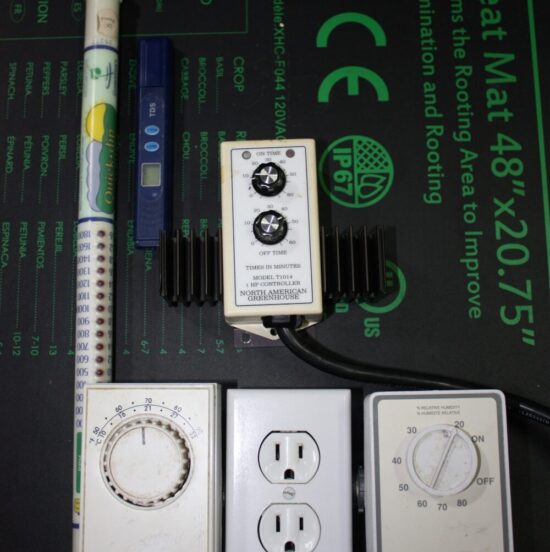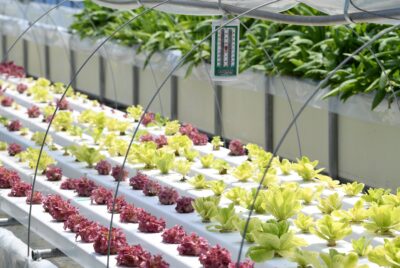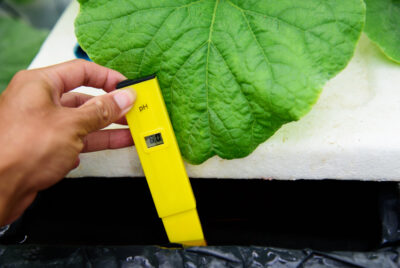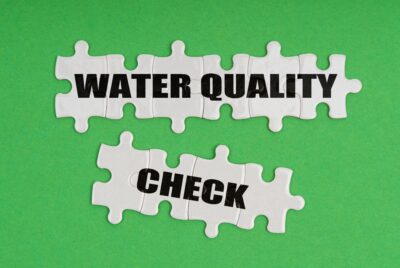Hydroponic Instruments
We may earn a commision from purchases made using our links. Please see our disclosure to learn more.
Creating The Perfect Environment With Hydroponic Instruments.
As a fervent advocate of hydroponics, I’ve always been fascinated by how this seemingly futuristic gardening method allows plants to thrive even in the most unexpected places. Over time, I’ve learned that a critical part of this success stems from an array of hydroponic instruments – the unsung heroes that make these soilless wonders possible.
The Magic of Hydroponics: Why Instruments Matter
Before we delve into the specifics, let’s pause and ask ourselves: Why do these instruments matter? In essence, hydroponic gardening hinges on providing precise conditions for plant growth, especially in a greenhouse. Thus, these instruments become vital as they allow us to control and closely monitor these conditions, ensuring that our plants remain healthy, happy, and prolific.
Understanding Hydroponic Instruments
Digital Light Meter
Acting as the eyes of your hydroponic system, the digital light meter measures the amount of light received by your plants, ensuring they get just the right amount of light to photosynthesize effectively.
PAR Meter
Similarly, the Photosynthetically Active Radiation (PAR) Meter, building on the concept of the digital light meter, measures the usable light – or light in the spectrum that plants can harness for photosynthesis.
Hygrometer
Ever noticed that stuffy feeling in a room when it’s too humid? Well, plants feel it too! Consequently, a hygrometer comes in handy to monitor humidity levels, ensuring your plants remain comfortable, thereby aiding their transpiration process.
Thermometer
Temperature undeniably plays a pivotal role in plant growth. Extreme temperatures, either too hot or too cold, can hinder growth or even be fatal. Hence, with a thermometer, you’re empowered to control temperature, ensuring it stays within the desired range.
PH Meter
Interestingly, plants have a preference when it comes to the pH levels of their nutrients. In light of this, a PH meter is essential to maintain this balance, optimizing nutrient absorption.
Pulse Meter
Think of the pulse meter as a plant physician, diagnosing the health of your plant’s root zone by measuring moisture content, temperature, and EC in the substrate.
TDS Meter
From a nutritional perspective, the Total Dissolved Solids (TDS) meter evaluates the concentration of dissolved solids in your nutrient solution. Imagine it as a dietitian for your plants, ensuring they receive just the right amount of nutrients.
Heat Mat & Thermostat
During the colder months, a heat mat thermostat acts as a protective shield, providing the ideal root zone temperature. It’s akin to wrapping your plants in a cozy blanket, especially crucial during germination and early growth stages.
A More Advanced Hydroponic Setup Using Instruments and Controllers
Fan Speed Controller
You might wonder, why the need to control your fan speed. Well, it’s to mirror nature! By using a fan speed controller, you’re able to simulate the outdoor conditions, ranging from gentle breezes to stronger winds, which in turn fortifies plant stems.
CO2 Generator and Controller
Venturing into the realm of photosynthesis, these tools are instrumental in managing the levels of carbon dioxide, an indispensable component of the process. While the CO2 generator enriches the environment with more CO2, the CO2 controller maintains that level, facilitating optimal growth.
CO2 Regulator
In the bustling traffic of your hydroponic setup, the CO2 regulator acts as the vigilant traffic cop. It regulates the influx of CO2 from the generator to the grow space, ensuring harmony and balance.
Cycle Timers
On a day-to-day basis, cycle timers act as meticulous organizers. They ensure timely operations, from lights to pumps to fans, replicating the natural cycles plants would experience in the wild.
Climate Controller
In a broader sense, the climate controller operates as the ultimate overseer. It vigilantly monitors and adjusts various facets of the climate in your grow area – temperature, humidity, CO2 levels, and light. Essentially, it calls the shots!
Humidity Controller
Zooming into specifics, the humidity controller, a variant of the climate controller, is dedicated to achieving the Goldilocks zone of humidity. It’s all about striking the right moisture balance!
Hydroponic Humidifiers and Dehumidifiers
Working in tandem, these devices ensure the perfect humidity equilibrium. While the humidifier infuses moisture into the air, the dehumidifier steps in when there’s an excess, restoring balance.
Conclusion: Harnessing the Power of Hydroponic Instruments
With this extensive arsenal of tools, we’re unmistakably geared to harness the sheer potential of hydroponics. Ranging from basic utilities like thermometers and light meters to advanced apparatuses like CO2 controllers and climate controllers, we’re equipped with everything needed to craft the idyllic environment for our plants.
It’s vital to note that every plant boasts its unique set of requirements. Therefore, these instruments are tailored to cater to those needs, crafting an unparalleled environment that not only mimics but often surpasses the natural habitat. So, dive in, innovate, and revel in the joy of cultivation!
FAQ’s
What are the most crucial hydroponic instruments for a beginner?
For those just embarking on their journey, fundamental instruments like a PH meter, thermometer, and light meter would serve as a great starting point. As your expertise grows, you can integrate more intricate tools like CO2 controllers and climate controllers.
Is a CO2 generator indispensable for all hydroponic setups?
Not in all cases. CO2 generators predominantly shine in expansive, sealed grow spaces. Conversely, in a compact, open system, the CO2 might simply disperse into the ambient air.
How frequently should I inspect my system with these instruments?
Although this could fluctuate based on the specific system and flora, a general guideline would be to perform a daily assessment.
Is it feasible to deploy a conventional household humidifier and dehumidifier in my hydroponic configuration?
While there’s potential to utilize standard household apparatuses, it’s often recommended to opt for devices explicitly crafted for hydroponics, given their precision and adaptability to meet specific plant needs.
Do multi-function hydroponic tools exist?
Absolutely! Multi-purpose tools, capable of gauging parameters like temperature, humidity, and light concurrently, are available. However, it’s pivotal to recognize that these might not always match the accuracy or adaptability of standalone, specialized instruments.





Comments are closed.